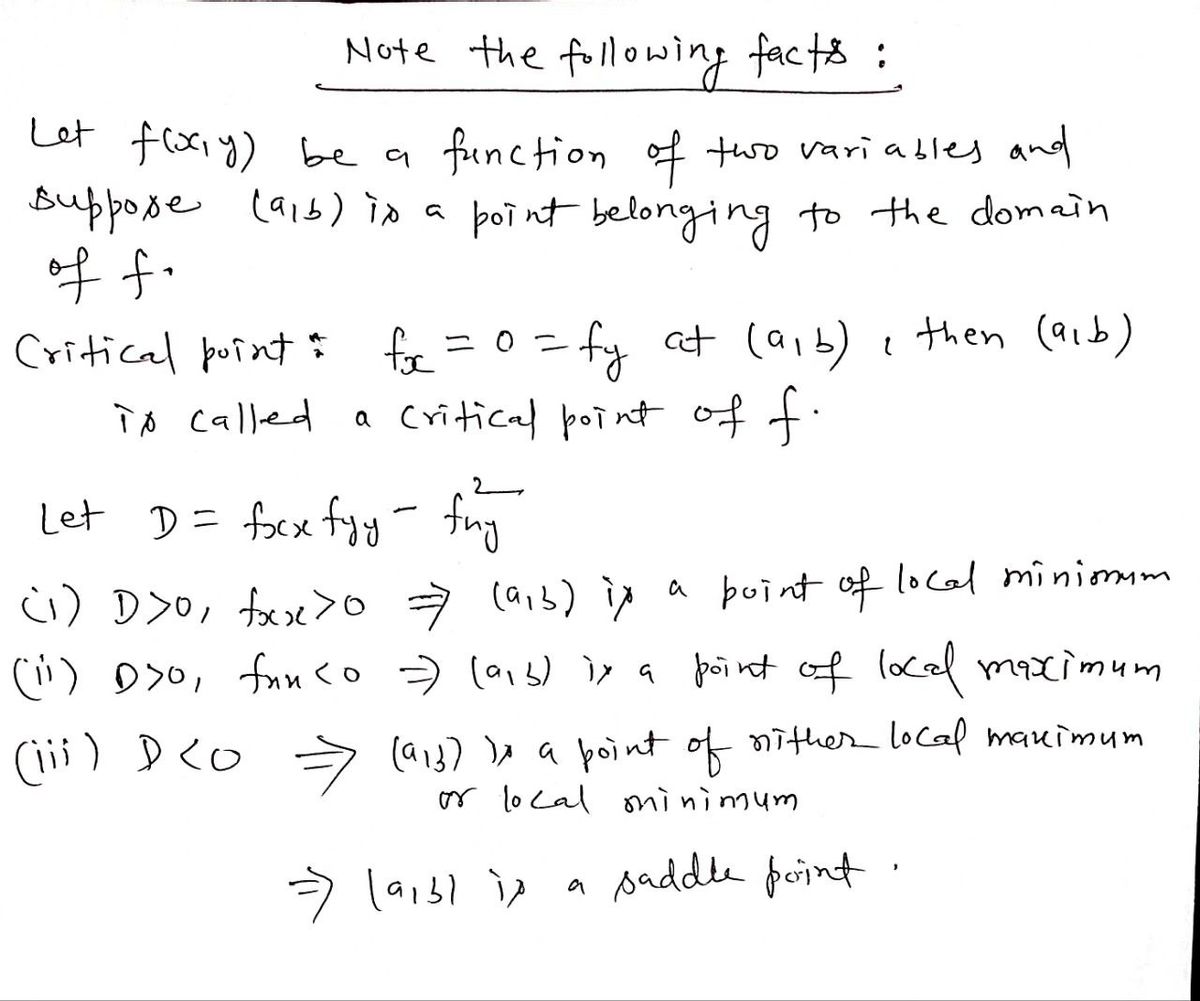The graphs of these three functions are shown in Figure 10.7.1, with z=4-2²-y² at left, z = ² + y² in the middle, and z = z² - y² at right. Use the graphs to decide if a function has a local maximum, local minimum, saddle point, or none of the above at the origin. There is no single second derivative of a function of two variables, so we consider a quantity that combines the second order partial derivatives. Let D=faz fy-fy. Calculate D at the origin for each of the functions fi, f2, and f3. What difference do you notice between the values of D when a function has a maximum or minimum value at the origin versus when a function has a saddle point at the origin?
The graphs of these three functions are shown in Figure 10.7.1, with z=4-2²-y² at left, z = ² + y² in the middle, and z = z² - y² at right. Use the graphs to decide if a function has a local maximum, local minimum, saddle point, or none of the above at the origin. There is no single second derivative of a function of two variables, so we consider a quantity that combines the second order partial derivatives. Let D=faz fy-fy. Calculate D at the origin for each of the functions fi, f2, and f3. What difference do you notice between the values of D when a function has a maximum or minimum value at the origin versus when a function has a saddle point at the origin?
Advanced Engineering Mathematics
10th Edition
ISBN:9780470458365
Author:Erwin Kreyszig
Publisher:Erwin Kreyszig
Chapter2: Second-order Linear Odes
Section: Chapter Questions
Problem 1RQ
Related questions
Question
Please help with a,b

Transcribed Image Text:CHAPTER 10. DERIVATIVES OF MULTIVARIABLE FUNCTIONS 91
Activity 10.7.3 Recall that the Second Derivative Test for single-variable
functions states that if zo is a critical point of a function f so that f'(zo) = 0
and if f"(ro) exists, then
if f"(ro) <0, zo is a local maximum,
●
if f"(zo) > 0, zo is a local minimum, and
if f"(ro) = 0, this test yields no information.
Our goal in this activity is to understand a similar test for classifying ex-
treme values of functions of two variables. Consider the following three func-
tions:
fi(x,y)=4-2²-y², f2(x, y) = x² + y², f3(x, y) = x² - y².
You can verify that each function has a critical point at the origin (0,0). You
should check this.
Figure 10.7.1 Three surfaces.
a. The graphs of these three functions are shown in Figure 10.7.1, with
z = 4 x² - y² at left, z = x² + y2 in the middle, and z = x² - y² at
right. Use the graphs to decide if a function has a local maximum, local
minimum, saddle point, or none of the above at the origin.
b. There is no single second derivative of a function of two variables, so we
consider a quantity that combines the second order partial derivatives.
Let D= faz fyy-fy. Calculate D at the origin for each of the functions
f1, f2, and f3. What difference do you notice between the values of D
when a function has a maximum or minimum value at the origin versus
when a function has a saddle point at the origin?
Expert Solution
Step 1

Trending now
This is a popular solution!
Step by step
Solved in 4 steps with 4 images

Recommended textbooks for you

Advanced Engineering Mathematics
Advanced Math
ISBN:
9780470458365
Author:
Erwin Kreyszig
Publisher:
Wiley, John & Sons, Incorporated

Numerical Methods for Engineers
Advanced Math
ISBN:
9780073397924
Author:
Steven C. Chapra Dr., Raymond P. Canale
Publisher:
McGraw-Hill Education

Introductory Mathematics for Engineering Applicat…
Advanced Math
ISBN:
9781118141809
Author:
Nathan Klingbeil
Publisher:
WILEY

Advanced Engineering Mathematics
Advanced Math
ISBN:
9780470458365
Author:
Erwin Kreyszig
Publisher:
Wiley, John & Sons, Incorporated

Numerical Methods for Engineers
Advanced Math
ISBN:
9780073397924
Author:
Steven C. Chapra Dr., Raymond P. Canale
Publisher:
McGraw-Hill Education

Introductory Mathematics for Engineering Applicat…
Advanced Math
ISBN:
9781118141809
Author:
Nathan Klingbeil
Publisher:
WILEY

Mathematics For Machine Technology
Advanced Math
ISBN:
9781337798310
Author:
Peterson, John.
Publisher:
Cengage Learning,

